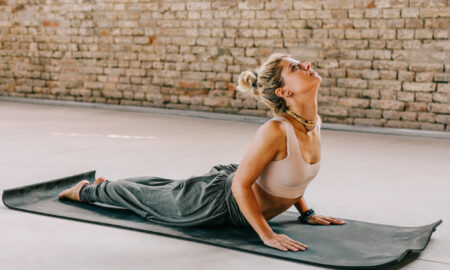Yin yoga is a slow-paced, meditative style of yoga that has gained popularity in recent years. However, despite its growing popularity, yin yoga still faces many misconceptions from people who are unfamiliar with it. In this article, we will explore some common misconceptions about yin yoga and how they can be addressed.
One common misconception about yin yoga is that it’s just stretching. While it’s true that yin poses involve holding stretches for extended periods of time (usually three to five minutes), the practice also incorporates elements of mindfulness and meditation. The focus on deep breathing and mental concentration can help practitioners develop greater awareness and acceptance of their physical and emotional states. Additionally, the long holds in yin poses allow for a deeper release of tension in the muscles and connective tissues than traditional stretching alone could achieve.
Misconception 1: Yin yoga is just stretching
The perception that Yin yoga solely comprises stretching limits its potential as a complementary practice to more vigorous forms of exercise and overlooks the holistic benefits it can provide for the body and mind. While yin yoga does involve holding poses for longer periods of time than other forms of yoga, it is not just about stretching muscles. Instead, yin yoga targets the deep connective tissues in the body, such as ligaments, joints, and fascia. By holding poses for several minutes at a time, practitioners are able to strengthen and lengthen these tissues in ways that cannot be achieved through dynamic movements alone.
In addition to physical benefits, yin yoga also provides opportunities for emotional and mental growth through mindfulness practices. The extended holds require stillness and presence, which can help individuals cultivate patience, focus, and self-awareness. This aspect of yin yoga can lead to profound insights into one’s inner world and promote overall wellbeing beyond just physical flexibility.
Misconception 2: Yin yoga is only for beginners
A prevalent assumption regarding Yin yoga is that it solely caters to novice practitioners, leading to the misconception that this practice is not challenging enough for experienced yogis. However, this notion could not be further from the truth. In fact, Yin yoga can provide a unique challenge to those who are used to more dynamic styles of yoga or other physical activities. Here are some reasons why:
- Holding poses for an extended period requires patience and mental endurance.
- The emphasis on stillness and introspection can be difficult for those with busy minds.
- The long holds can also lead to discomfort in the body, requiring practitioners to develop their ability to tolerate discomfort without reacting impulsively.
- Yin yoga often targets deep connective tissues such as fascia and ligaments which can be more resistant than muscles.
In summary, while Yin yoga may seem gentle and accessible at first glance, it offers its own set of challenges that are distinct from other forms of physical activity or even other types of yoga practices. Experienced practitioners should not discount its value based on misconceptions about its level of difficulty or intensity.
Misconception 3: Yin yoga is not a “real” workout
Despite the belief that Yin yoga is not a rigorous exercise, it can be an effective form of physical activity for individuals looking to improve flexibility, balance, and mobility. While traditional forms of yoga focus on building strength through dynamic movements and poses, Yin yoga emphasizes longer holds in seated or reclined postures that target the connective tissues and joints. By holding these poses for several minutes at a time, practitioners are able to deeply stretch their muscles and increase range of motion.
Related News:-
Vinyasa Yoga Poses for beginners
Additionally, Yin yoga has been shown to have numerous benefits beyond physical fitness. The meditative nature of the practice can lead to reduced stress levels and increased mindfulness. The long holds also provide ample opportunity for introspection and self-reflection. While it may not be as intense as some other forms of exercise, Yin yoga offers unique benefits that should not be overlooked by those seeking a well-rounded fitness routine.
Conclusion
Yin yoga is a practice that has been gaining popularity in recent years. However, there are still some misconceptions surrounding this practice that need to be addressed. One common misconception is that yin yoga is just stretching. While yin yoga does involve holding poses for longer periods of time, it also focuses on mindfulness and meditation.
Another misconception about yin yoga is that it’s only for beginners. In reality, yin yoga can be a challenging practice for anyone, regardless of their level of experience. It requires patience and the ability to sit with discomfort, which can be difficult even for advanced practitioners.
Lastly, some people may think that yin yoga isn’t a “real” workout because it doesn’t involve the same level of physical exertion as other forms of exercise. However, studies have shown that yin yoga can improve flexibility and joint health while reducing stress and anxiety.
According to a study published in the International Journal of Yoga Therapy, practicing yin yoga regularly can lead to significant improvements in range of motion and joint function among older adults with knee osteoarthritis. This highlights the potential benefits of incorporating yin yoga into one’s exercise routine.
In conclusion, while there are still misconceptions about yin yoga, it’s important to recognize its unique benefits beyond just physical stretching. Yin yoga requires mental focus and cultivates mindfulness while also offering physical benefits such as improved joint health and flexibility.










